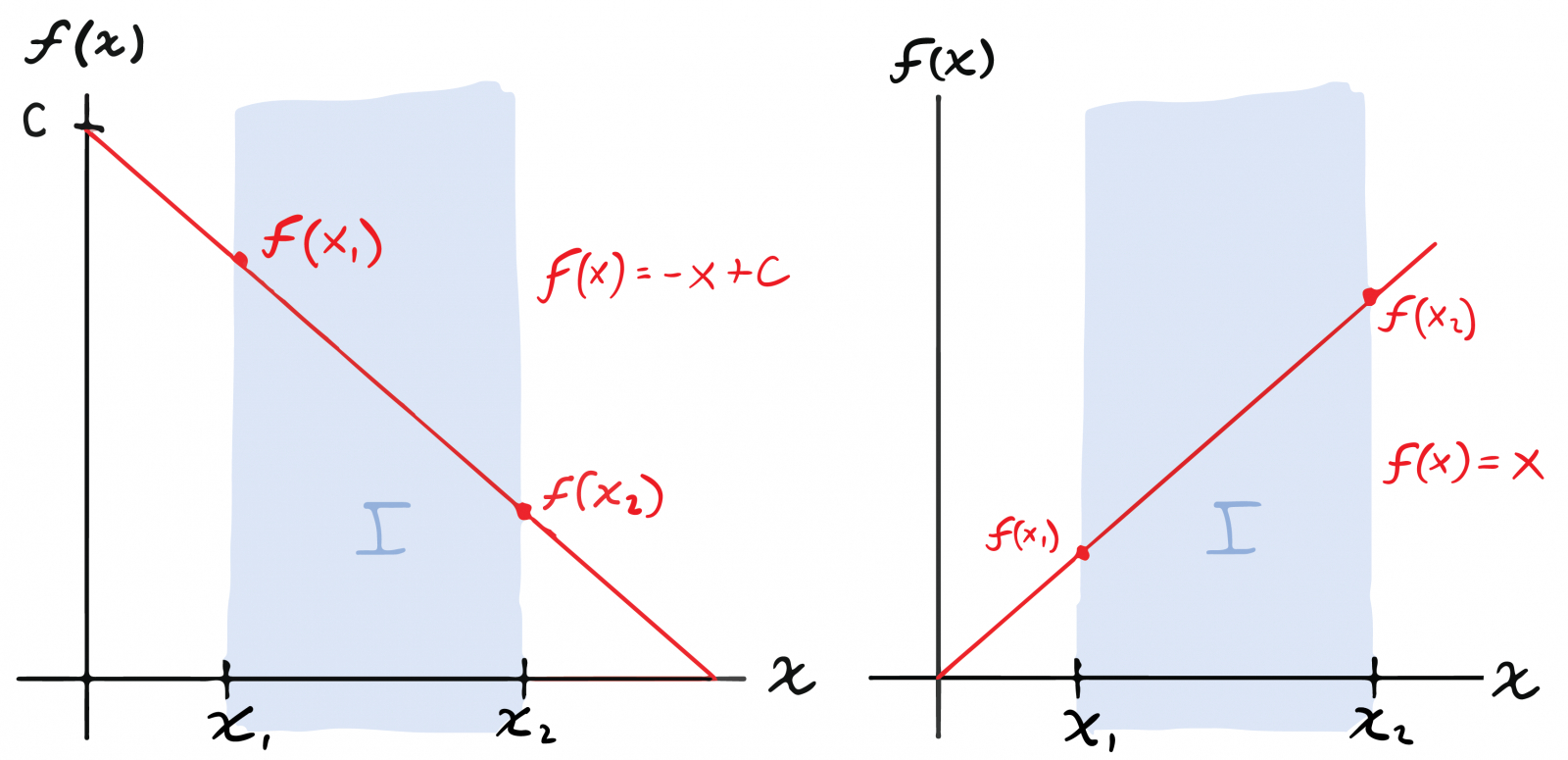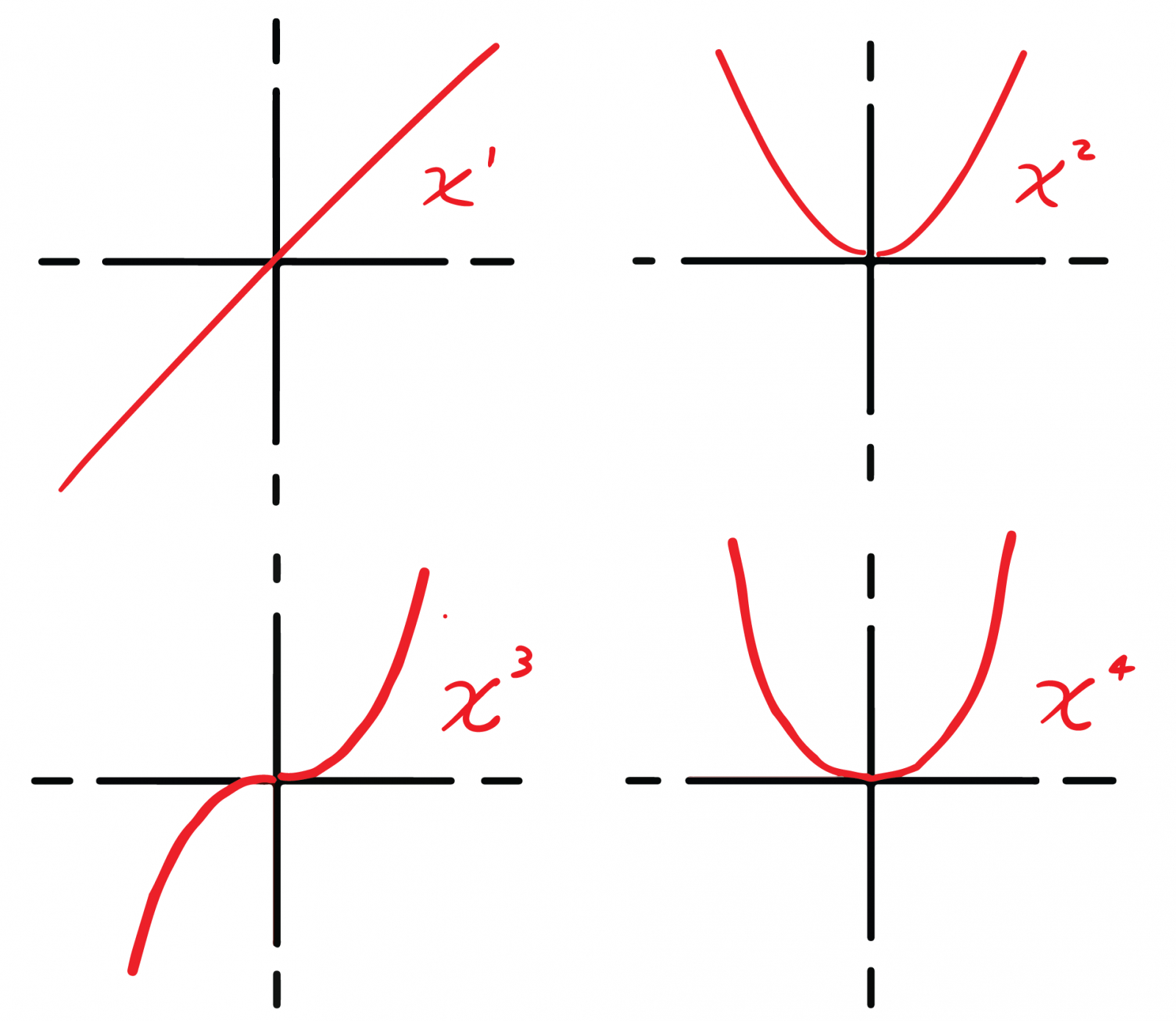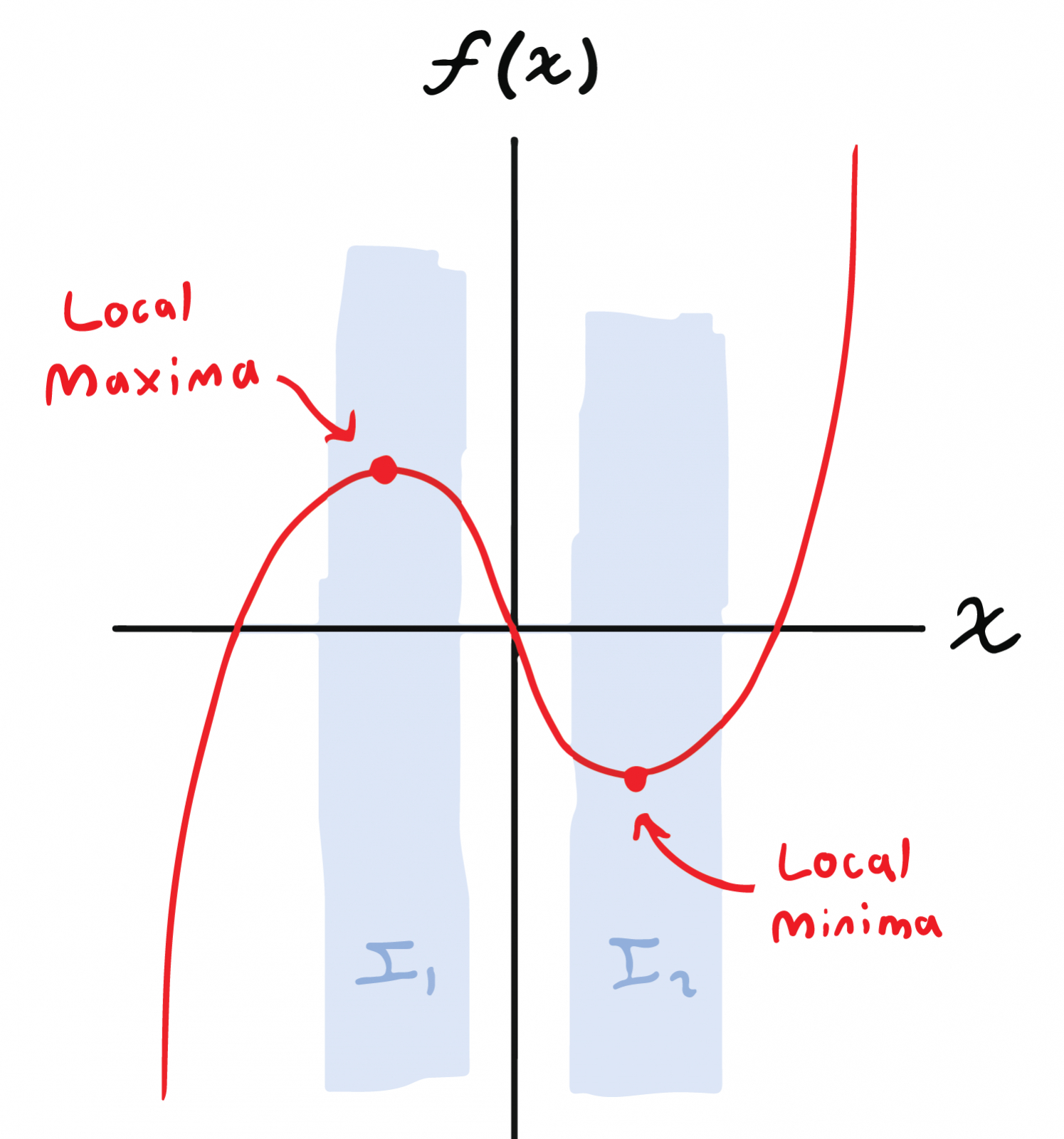Function Behavior
There are a few ways which we can describe the behavior of functions that can help us better understand what the function is going to do.
 It's very useful to consider when functions are even or odd, since when you are sure your function satisfies this property, you can compute the other half of the function just by re-using the first half. Computers make heavy use of this property for compression algorithms like the Discrete Cosine Transform -the magic that makes JPEGs and movies take up very little space.When looking at functions of , we see that functions where is odd have odd symmetry, and functions where is even, have even symmetry.
It's very useful to consider when functions are even or odd, since when you are sure your function satisfies this property, you can compute the other half of the function just by re-using the first half. Computers make heavy use of this property for compression algorithms like the Discrete Cosine Transform -the magic that makes JPEGs and movies take up very little space.When looking at functions of , we see that functions where is odd have odd symmetry, and functions where is even, have even symmetry. 
 It's possible that a function has no global maximum or minimum, but, instead has one or more Local extremes. In the example here, this function has both a Local Minima and a Local Maxima, but no global maxima or minima.
It's possible that a function has no global maximum or minimum, but, instead has one or more Local extremes. In the example here, this function has both a Local Minima and a Local Maxima, but no global maxima or minima.  In all cases, the maxima and minima are places where the function's graident is equal to zero. That is to say, if you were to zoom in on the function at the extremes, it would look like a "flat" line.Tools which search for maxima or minima are called gradient ascent or gradient descent algorithms, of which, there are at least 20 kinds. These algorithms are used very often to optimize problems such as the shape of a lens, or the shape of an automobile frame. They are also used to calculate physical phenomena, such as how water should flow down a mountain.
In all cases, the maxima and minima are places where the function's graident is equal to zero. That is to say, if you were to zoom in on the function at the extremes, it would look like a "flat" line.Tools which search for maxima or minima are called gradient ascent or gradient descent algorithms, of which, there are at least 20 kinds. These algorithms are used very often to optimize problems such as the shape of a lens, or the shape of an automobile frame. They are also used to calculate physical phenomena, such as how water should flow down a mountain.
Monotonic Functions
A function which is monotonic is one where the function never changes "direction". That is to say, it is either always increasing or decreasing across the whole domain of the function. All straight lines on a Cartesian plane which are not vertical, are indeed monotonic functions (vertical lines are not functions at all!).This property can also be considered across particular intervals, which is just a fancy way of saying "part of" a function. In the case here, we have the functions , and , which are both monotonic across the interval .
Even and Odd Functions
Much like numbers, functions can be even or odd. An even function is one where , which is to say that the positive half of a function, is the same as its negative half. When viewed on a graph, it's as if the function on the right of the graph is a mirror image of the function on the left. An odd function on the other hand, does not have this property. Instead, and odd function satisfies , where the part on the left side of the graph is "flipped" vertically. Functions which are not even or odd, have no symmetry.

Maxima and Minima
On some functions, it's safe to say that the function never goes above, or below, a particular value. This value is called the Global Maxima or Global Minima of the function, and it is very handy when you need to know for example, where the bottom of a hill is so a ball can stop rolling in a video game.
